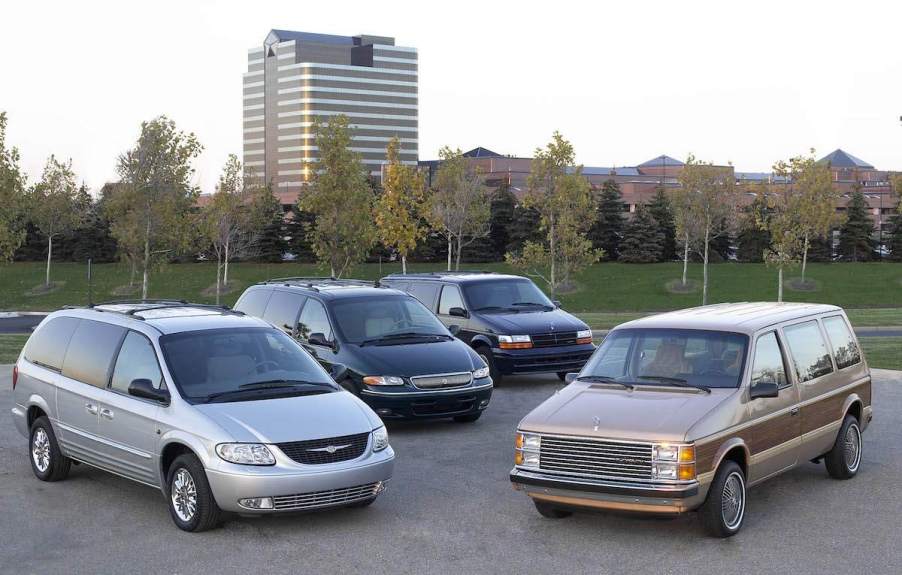
Chrysler Beat Ford at the Minivan Game Thanks to 2 Former Employees
The minivan segment is not the largest or most competitive, but it has a storied history. In fact, the story of the modern minivan begins with two former Ford employees who had a great idea and made it work at their new job with Chrysler. Here’s how Hal Sperlich and Lee Iacocca helped Chrysler beat Ford at the minivan game.
The minivan’s origins aren’t that surprising

Despite being a well-known segment nowadays, minivans are a relatively recent creation. Vans have been around for a while, including well-known models like the Volkswagen Microbus and the aptly named Chevy Van. However, vans are large vehicles that can be challenging to maneuver and park, especially for households with small garages.
Automakers made smaller vans, too, such as the Dodge A100, The New York Times reports. However, those compact models weren’t minivans by any stretch of the imagination because they weren’t designed for suburban households. Many owners also used those vans as they would work trucks.
Chrysler began playing with the idea of an even smaller van in 1972, but that idea largely remained on paper. Not until two former Ford employees joined the company did the modern minivan come to fruition.
How 2 former Ford employees helped Chrysler take the minivan to market
Two automotive executives — Lee Iacocca and Hal Sperlich — left Ford for Chrysler in the late ’70s. At the time, the Blue Oval was toying with the idea of a minivan, but that idea never went anywhere. However, Sperlich and Iacocca liked the idea of a minivan, and during their time at Chrysler, they accelerated the company’s tinkering with the minivan concept.
The process was helped by the fact that Chrysler had many small front-wheel-drive platforms, ideal for building a minivan. The automaker made the first modern minivan — the Dodge Caravan — on a stretched version of the company’s K-car platform. Chrysler gave it a relatively weak 100-hp engine and a relatively affordable $20,000 price. From there, the sales numbers just spoke for themselves.
Chrysler sold over 200,000 minivans in the Dodge Caravan’s debut year. It continued selling well over the years, peaking at around 600,000 units annually. Soon after the Caravan’s 1983 launch, Chrysler released another minivan, the Plymouth Voyager. These two Chrysler minivans sold so well they buried Ford’s attempts to break into the minivan segment.
Chrysler minivans were a runaway success, and Ford couldn’t catch up
The Dodge Caravan and Plymouth Voyager’s immediate success showed automakers that Americans wanted more minivans. But Ford took a few years to respond. According to Hagerty, the company debuted the Aerostar in 1986. It was different from the Chrysler minivans that had taken the automotive world by storm. Rather than having front-wheel drive, the Aerostar boasted rear-wheel drive.
That was an innovative choice, but not for the reasons Ford wanted. The Aerostar wasn’t as appealing as the Caravan, but the design choices allowed the Blue Oval to get a leg up in the SUV segment. The Windstar, which Ford later renamed the Freestar, debuted in 1995. It had front-wheel drive instead. Regardless, the Windstar, like the Aerostar, still couldn’t compete with Chrysler minivans.



